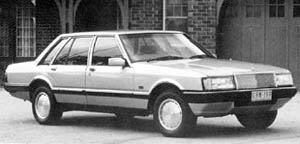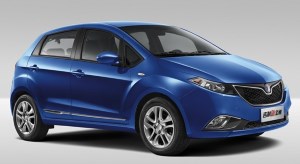
Above: The US Ford Granada in a contemporary advertisement, as posted at americangranada.com.
Not the European car, but the American one of the same name: the Ford Granada was marketed as a US alternative to a Mercedes-Benz. Not as overstyled as, say, the Ford Maverick, this was an extremely heavy car, and Ford’s marketing emphasized how it was as good as the Mercedes-Benz, at a similar size.
There’s not much by way of the Ford identity in this car’s design: it comes across as a pastiche of the Merc and something that Lee Iacocca would dream up. It was, after all, the 1970s—probably the last decade occidental car companies tried things without regard to how models might look in their range.
The heaviness may be due to the amount of standard equipment. Iacocca was quite happy to lavish his era of Fords with gear. There’s little mention of his involvement with the Granada, not even in his autobiography, but it seems in line with his approach with the Mustang II.
While there’s still some “Fordness” to the overall look, e.g. in the waistline, I don’t remember contemporary Fords having this type of grille, and the later Granada (and related Mercury Monarch) facelifts continued to give this line a different style to the others. (On a side note, there was also an ultra-plush Granada called the Lincoln Versailles, which was not that successful; the equivalent in recent times, of a modern Ford sold under all three brands and looking about the same, was the CD338 Ford Fusion, Mercury Milan and Lincoln MKZ [née Zephyr].)
I remember contemporary reports that swallowed Ford’s claims and published diagrams on how similar the two cars were (PR info from Dearborn?), and I even have a Kiwi friend in Whitby who loves his Yank Granada. Fascinating looking back at these cars, 35 years on—and how branding plays a far greater role in automotive design today than it did back then.







